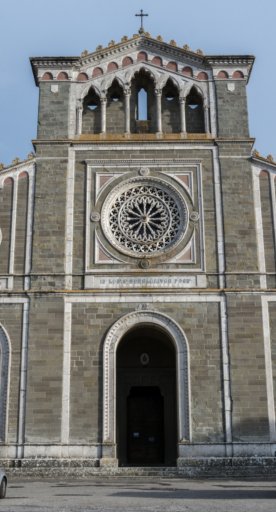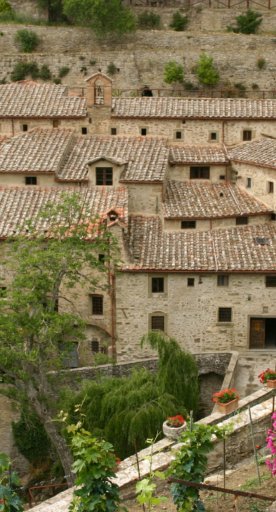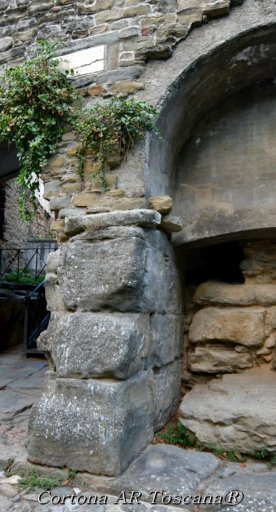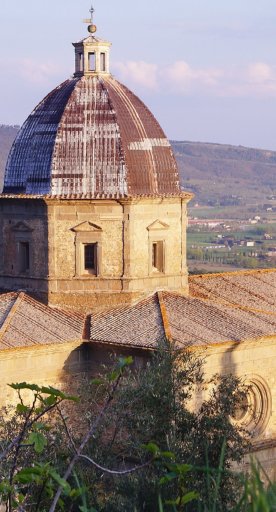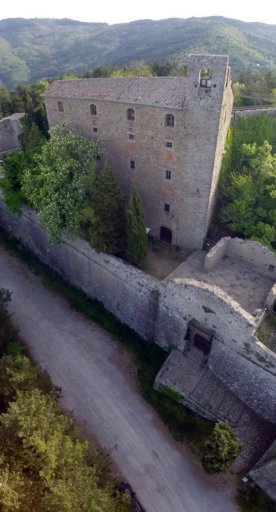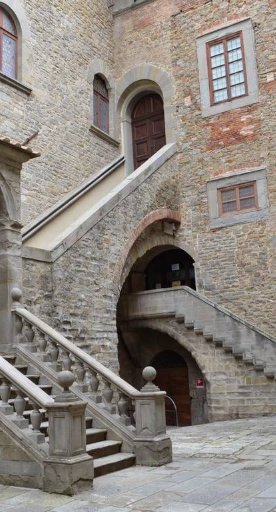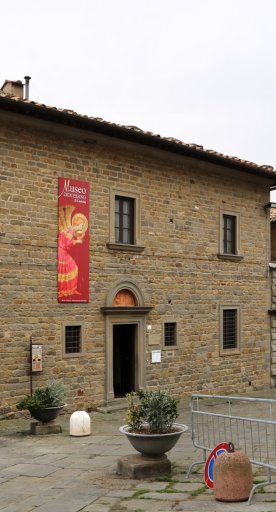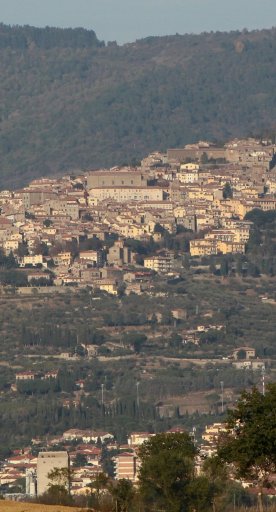
Archeological area in Cortona
The impressive Etruscan tombs at the complexes in Sodo and Camucia
The archeological area in Cortona includes the magnificent, noble tombs at the complex in Sodo and the mound in Camucia, a testament to the presence of Etruscan aristocracy in the territory.
The first mound of Sodo contains a tomb discovered in 1909 that dates to the 6th century BCE, comprising a series of chambers along the sides of a central corridor (dromos).
The second mound in Sodo rises like a colossal mass atop a monumental drum made of large, squared blocks: it contains two tombs, the first of which dates to the 6th century BCE, brought to light in 1928, and the second, found in the 1990s. Just opposite is a massive altar/podium used for funerary purposes; the structure has a flight of steps with antae built from blocks that are sculpted with depictions of a fight between two warriors armed with daggers who are trying to strike at the wild beasts that are crushing them. It’s certainly impressive, the only one of its kind in Etruria and decorated with refined elements of ancient sculpture. The mound in Camucia contains two tombs. The first was discovered in 1840 by the famous archeologist Alessandro François, while the second was found in 1964.
The precious exhibits found in the mounds of Sodo and Camucia are now preserved at the MAEC - the Etruscan Academy Museum in Cortona.
Accessibility information: cortonamaec.org
The Mound of Camucia is temporarily closed due to structural problems.
